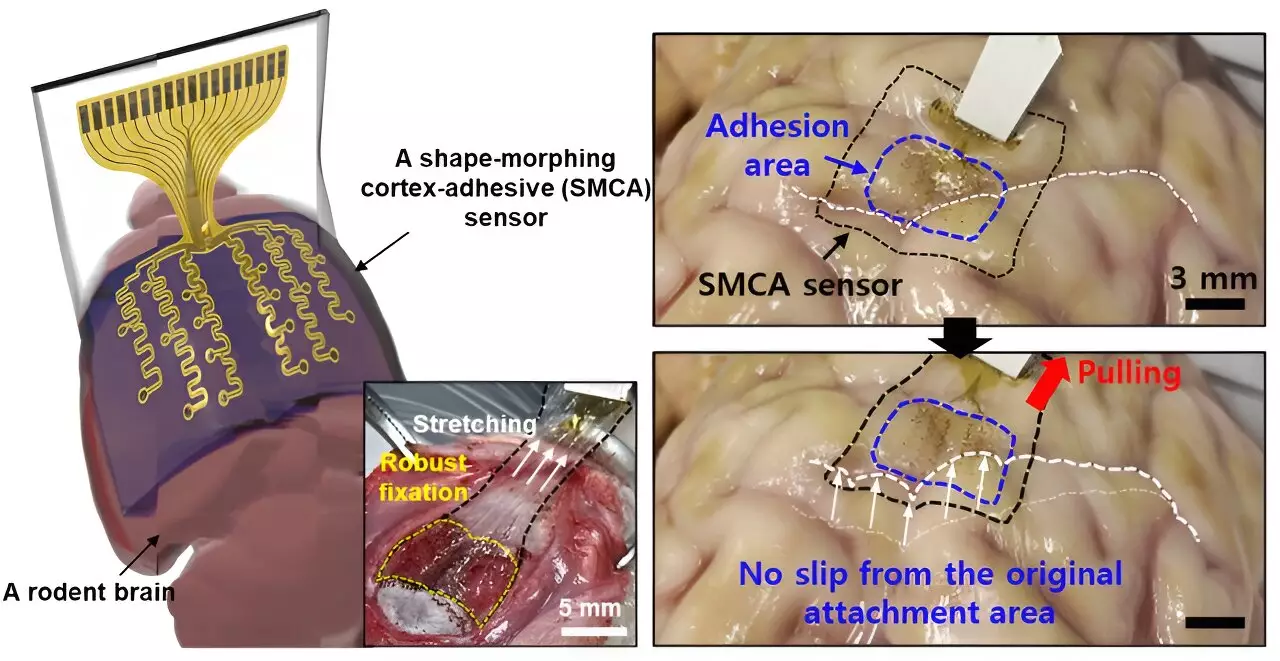Recent advances in medical technology have led to the development of transcranial focused ultrasound (tFUS), a non-invasive intervention utilizing high-frequency sound waves for targeted brain stimulation. This technique shows promise in addressing various neurological conditions, particularly drug-resistant epilepsy and tremor-related disorders. Researchers from Sungkyunkwan University (SKKU), the Institute for Basic Science (IBS), and the Korea Institute of Science and Technology have recently focused their efforts on enhancing tFUS technology by designing a groundbreaking sensor. Published in Nature Electronics, this advancement could revolutionize how we approach the diagnosis and treatment of neurological disturbances.
Historically, brain sensors that made contact with the cortical surface encountered notable inaccuracies in signal measurement, attributed to their inability to conform precisely to the intricate folds of brain tissue. As Donghee Son, the study’s supervising author, pointed out, this limitation hindered the effective analysis of brain lesions. Previous solutions, such as sensors developed by prominent researchers like Professors John A. Rogers and Dae-Hyeong Kim, addressed some of these shortcomings but struggled to maintain contact and provide reliable readings, especially in highly curved regions of the brain during physiological movements, like the flow of cerebrospinal fluid.
These deficiencies highlighted the need for a new generation of sensors capable of overcoming these barriers not only by adhering effectively to irregularly shaped tissues but also by allowing for ongoing data monitoring.
The newly developed sensor, referred to as ECoG, significantly enhances the connection between the sensor and brain tissue. With a unique design that ensures a secure fit without voids, the ECoG sensor minimizes noise from external mechanical influences, a critical factor in accurately treating epilepsy with low-intensity focused ultrasound (LIFU). As noted by Son, while ultrasound is known to suppress seizure activity, individual variability in patient conditions traditionally complicated the custom tailoring of treatments. The ECoG sensor addresses this challenge by offering reliable, real-time monitoring of brain activity during stimulation.
The ECoG sensor comprises three principal layers designed to work cohesively: a hydrogel layer for chemical and physical bonding with brain tissue, a self-healing polymer layer that adjusts its shape to match the varying contours of the cortex, and an ultrathin stretchable layer embedded with gold electrodes. This innovative design allows the sensor to maintain robust adhesion while adapting dynamically to the brain’s morphological changes, thereby expanding the area of contact over time. The combination of these technologies reduces external vibrations induced by ultrasound stimulation, creating a more stable platform for brain wave measurement.
Son articulates the significance of their work, emphasizing that the confluence of tissue-adhesive and shape-morphing technologies is revolutionary, as it addresses long-standing challenges in brain sensing methodologies.
The versatility of the ECoG sensor extends far beyond epilepsy treatment; it shows potential applicability in diagnosing and managing various neurological disorders. As the research progresses, the sensor has already demonstrated promising outcomes in early tests on awake rodents, where it effectively measured brain waves and facilitated seizure control.
Future plans include enhancing the design into a high-density electrode array, which could provide high-resolution mapping of brain signals. Currently equipped with 16 electrode channels, ongoing research aims to increase this number significantly. Successful clinical trials could pave the way for this advanced technology to contribute to more effective treatment modalities for both epilepsy and a host of other neurological conditions, thereby impacting the landscapes of medical intervention and prosthetic technologies.
The strides being made in transcranial focused ultrasound and sensor technology represent a monumental leap forward in neuroscience and patient care. By addressing the limitations of existing sensors and introducing adaptable designs that closely conform to the brain’s intricate anatomy, researchers are enhancing the potential for personalized treatment strategies. With ongoing developments and the prospect of further applications, the future of managing neurological disorders looks promising. As researchers continue to refine and expand upon these innovations, the potential for improved patient outcomes in neurology becomes increasingly tangible.


Leave a Reply
You must be logged in to post a comment.